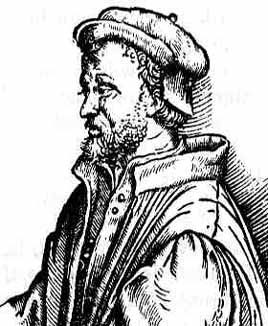|
"VIP"
Gerolamo Cardano
He was born in Pavia , in September 24, 1501, the illegitimate child of Fazio Cardano, a mathematically gifted lawyer, who was a friend of Leonardo da Vinci.
In 1520, he entered the University of Pavia and later in Padua studied medicine. His eccentric and confrontational style did not earn him many friends and he had a difficult time finding work after his studies had ended. In 1525, Cardano repeatedly applied to the College of Physicians in Milan, but was not admitted due to his reputation and illegitimate birth.
Eventually, he managed to develop a considerable reputation as a physician and his services were highly valued at the courts. He was the first to describe typhoid fever.
Today, he is best known for his achievements in algebra. He published the solutions to the cubic and quartic equations in his 1545 book Ars Magna. The solution to one particular case of the cubic, x3 + ax = b (in modern notation), was communicated to him by Niccolò Fontana Tartaglia (who later claimed that Cardano had sworn not to reveal it, and engaged Cardano in a decade-long fight), and the quartic was solved by Cardano's student Lodovico Ferrari. Both were acknowledged in the foreword of the book, as well as in several places within its body. In his exposition, he acknowledged the existence of what are now called imaginary numbers, although he did not understand their properties (Mathematical field theory was developed centuries later). In Opus novum de proportionibus he introduced the binomial coefficients and the binomial theorem.
Cardano invented several mechanical devices including the combination lock, the gimbal consisting of three concentric rings allowing a supported compass or gyroscope to rotate freely, and the Cardan shaft with universal joints, which allows the transmission of rotary motion at various angles and is used in vehicles to this day. He studied hypocycloids, published in de proportionibus 1570. The generating circles of these hypocycloids were later named Cardano circles or cardanic circles and were used for the construction of the first high-speed printing presses. He made several contributions to hydrodynamics and held that perpetual motion is impossible, except in celestial bodies. He published two encyclopedias of natural science which contain a wide variety of inventions, facts, and occult superstitions. He also introduced the Cardan grille, a cryptographic tool, in 1550
Cardano was accused of heresy in 1570 because he had computed and published the horoscope of Jesus in 1554. Apparently, his own son contributed to the prosecution, bribed by Tartaglia. He was arrested, had to spend several months in prison and was forced to abjure his professorship. He moved to Rome, received a lifetime annuity from Pope Gregory XIII (after first having been rejected by Pope Pius V) and finished his autobiography.
He died in Rome, in September 21, 1576.
Camillo Golgi
Lazzaro Spallanzani
Alessandro Volta
|
 "
"

